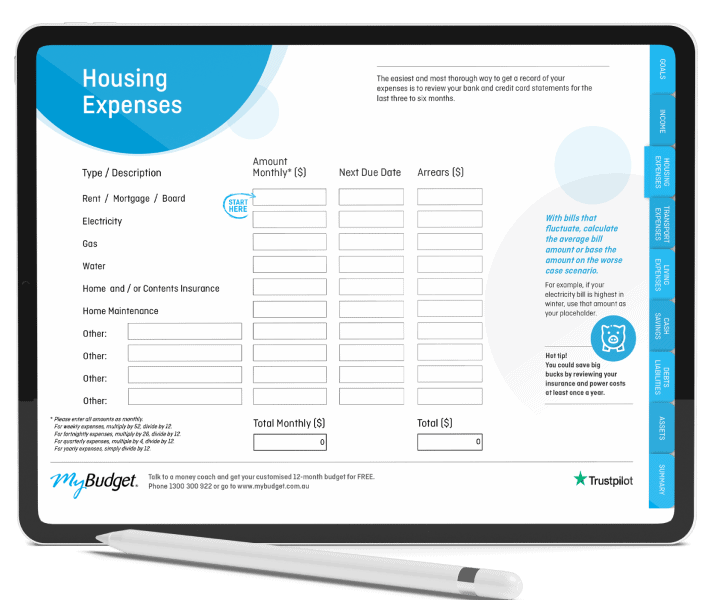What is bankruptcy? 7 bankruptcy facts that separate myth from reality
If you’re reading this blog, chances are you’re wondering, ‘What is bankruptcy?’ Well, it is a legal process you can apply for if you are unable to pay your debts. It can release you from several debts, provide relief and allow you to make a fresh start.
Filing for bankruptcy isn’t simple or pleasant, but it’s important to understand how bankruptcy works and separate bankruptcy myths from bankruptcy facts before you consider this legal process. That’s why we’ve created this fact vs fiction guide to help you better understand bankruptcy and whether it may be the right option for you.
Is bankruptcy my only option?
If you’re experiencing some form of financial stress, you might be feeling so overwhelmed by debt or so far behind in your bills that you can’t see any other option than going bankrupt.
You could have debt collectors chasing you and strained personal relationships. Your work and health may be suffering. At a time when you need support and help more than ever, you may feel alone and isolated.
Bankruptcy can have a significant impact on your financial future and it’s important to note that there might be a better option for your specific circumstances.
It’s important to separate the myths from the facts before you commit one way or the other.
Please keep in mind that there are no one-size-fits-all solutions when it comes to money, which is why this information is provided for general purposes only. If you would like to speak with a personal budgeting specialist about a tailored money solution, please contact us to arrange a free, no obligation discussion.
Seven bankruptcy facts you need to know
Now you know that bankruptcy isn’t your only option, it’s time to learn some fast facts that can help weigh up your options, sort out reality from myths, and determine if it is right for you and your circumstances.
Bankruptcy fact 1: You are appointed a trustee
When you become bankrupt, you are appointed a trustee by the Australian Financial Security Authority (AFSA). A trustee is a person or body who manages your bankruptcy. This can either be the Official Trustee (AFSA) or a registered trustee (you also have the option of nominating a registered trustee of your choosing).
Bankruptcy fact 2: You receive the protection of the Bankruptcy Act
When you’re declared bankrupt, you receive the protection of the Bankruptcy Act, which stops creditors from taking further action. This means that when you’ve filed for bankruptcy, you’ll no longer be contacted by creditors for debts included in your agreement.
Bankruptcy fact 3: You have several obligations you must meet
When you declare yourself bankrupt, there are a few things you need to do as part of the legal process. This includes providing details of your debts, income and assets to your trustee. Your trustee then notifies your creditors that you’re bankrupt, and this prevents most creditors from contacting you about your debt. Your trustee can also sell certain assets to help pay your debts. If you earn over a set amount, you may have to make compulsory payments to your trustee too. There may also be some restrictions on your employment and running a business.
Bankruptcy fact 4: Your assets may be taken or sold
As part of the process, your trustee may be able to claim – and sell – some of your possessions (assets). There are penalties for not disclosing your assets with your trustee. Your trustee can then use the proceeds from the sale of your assets to repay money you owe to creditors. Assets that can be sold may include, but are not limited to: real estate, bank balances, tools, lottery winnings and vehicles with values above the threshold.
Bankruptcy fact 5: Your ability to obtain future credit might be affected
If you apply for credit over a set amount, you must tell the credit provider about your bankruptcy. Credit reporting agencies keep a record for:

- Five years from the date you became bankrupt or
- Two years from when your bankruptcy ends, whichever is later.
Your name will also appear on the National Personal Insolvency Index (NPII) forever. The NPII is a searchable public register listing insolvency proceedings in Australia.
Bankruptcy fact 6: It may affect your ability to travel overseas
If you’re declared bankrupt, it’s an offence to travel overseas without consent in writing. You must request permission from your trustee to leave Australia, and your trustee might ask for further details to consider your request.
Bankruptcy fact 7: It normally lasts for three years and one day
The period is usually three years and one day, but it appears on your credit file for five years. At the end of the period, you’re released from your included debts.
Bankruptcy is an opportunity to reduce financial stress and start afresh, but it does come with consequences that vary from person to person.
It is not a magic bullet, though. The key to your financial recovery is getting financially fit and saying goodbye to your money worries forever.
So, what does this all mean?
Before entering into bankruptcy, you should understand the consequences of this legal process. We have mentioned many of these bankruptcy facts above, but we’ve also created a helpful guide to help you understand the consequences of bankruptcy.
It’s also important you know your options. Bankruptcy is just one of the formal options available under the Bankruptcy Act to manage your debt. Other formal options include temporary debt protection (which lasts for 21 days and prevents creditors enforcing a judgement against you), a debt agreement or a personal insolvency agreement.
If you’ve ever asked yourself ‘What is bankruptcy?’, we hope this guide helped you understand the process
It’s important to seek help before proceeding. The team at MyBudget are happy to provide a free consultation and can help with your specific financial situation (we specialise in providing you options that help you deal with unmanageable debt).
We’ll analyse your finances, help you understand the process and help look at all of your options. If this is the right approach, our insolvency team will explain how to apply for bankruptcies in Australia, help you navigate the process and work with you to get you get back on your feet.
If you’re still wanting to know more about how bankruptcy works or need help separating the myths from the facts, then have a chat with us today.
Ready to find out more?
Call 1300 300 922 or get started today

